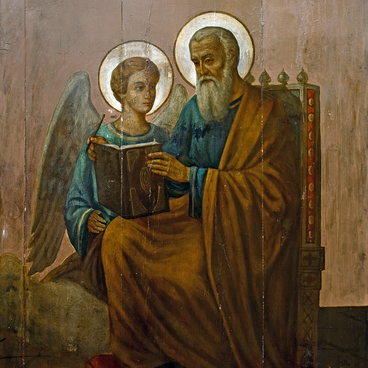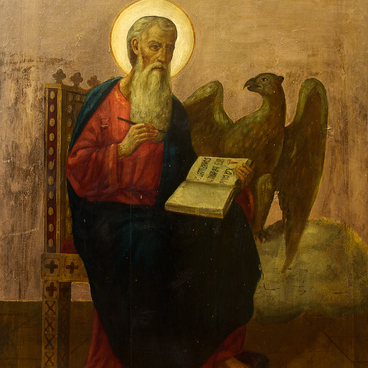John the Baptist, according to the Gospels, was the immediate precursor of Jesus Christ, who predicted His Advent. According to the Scriptures, John led an ascetic life in the desert, where he preached and performed the rite of holy washing for the purification of sins and repentance of the Jews in the waters of the Jordan River — a rite which was the basis for the later Christian sacrament of baptism. According to the Christian viewpoint, he was the last in the line of prophets who were harbingers of the Messiah’s advent.
Prophet John the Baptist is the most revered saint after the Virgin Mary. There are seven Christian feasts associated with the name of John the Forerunner. He was the son of the priest Zachariah, who came from the line of Aaron and the righteous Elizabeth, who was related to the line of King David. It is known that his parents lived near Hebron, south of Jerusalem. He was therefore related to Jesus on his mother’s side and was born six months before Christ, having miraculously escaped death during the slaughter of babies in and around Bethlehem by order of King Herod.
There are many versions of the image of John the Baptist in the Christian world. He is usually depicted half-length and always facing the worshiper. In the icon painting manuals, providing canonical descriptions of persons and events, the saint is described as follows: “Jewish in appearance, middle-aged, very thin in body and face, of pale brownish body color, black beard, less than average in size, divided into strands or tousles, black hair, thick and curly, also divided into strands; his clothes are made of coarse camel’s hair, like a sack; a leather belt girded around the saint’s waist”.
The displayed icon is not quite the traditional image of the saint. John the Baptist is shown full-length, wearing unusual clothes and turning sideways, with his arms folded crosswise as he embraces the cross. Nevertheless, some essential features of his image are preserved, such as the length and color of his hair and beard, and elements of his camel’s hair clothing. A similar version of the icon was painted during the Great Patriotic War for the newly opened parish of the Church of the Icon of the Mother of God “Joy of All Who Sorrow” in Michurinsk. It remained in the church until 2018, when it was transferred to the Michurinsk Museum of Local Lore.
Prophet John the Baptist is the most revered saint after the Virgin Mary. There are seven Christian feasts associated with the name of John the Forerunner. He was the son of the priest Zachariah, who came from the line of Aaron and the righteous Elizabeth, who was related to the line of King David. It is known that his parents lived near Hebron, south of Jerusalem. He was therefore related to Jesus on his mother’s side and was born six months before Christ, having miraculously escaped death during the slaughter of babies in and around Bethlehem by order of King Herod.
There are many versions of the image of John the Baptist in the Christian world. He is usually depicted half-length and always facing the worshiper. In the icon painting manuals, providing canonical descriptions of persons and events, the saint is described as follows: “Jewish in appearance, middle-aged, very thin in body and face, of pale brownish body color, black beard, less than average in size, divided into strands or tousles, black hair, thick and curly, also divided into strands; his clothes are made of coarse camel’s hair, like a sack; a leather belt girded around the saint’s waist”.
The displayed icon is not quite the traditional image of the saint. John the Baptist is shown full-length, wearing unusual clothes and turning sideways, with his arms folded crosswise as he embraces the cross. Nevertheless, some essential features of his image are preserved, such as the length and color of his hair and beard, and elements of his camel’s hair clothing. A similar version of the icon was painted during the Great Patriotic War for the newly opened parish of the Church of the Icon of the Mother of God “Joy of All Who Sorrow” in Michurinsk. It remained in the church until 2018, when it was transferred to the Michurinsk Museum of Local Lore.

